Vong Communal House was built around the 15th-16th century, in Ke Moc land, located on the To Lich River. The Communal House faces east and is also called Ha Dinh Communal House. The Communal House belongs to Ha Dinh ward, Thanh Xuan district, now Khuong Dinh ward, Hanoi .
Architectural and artistic relics
According to existing documents, the birth date of Vong communal house can be determined to be in the Le Trung Hung period (16th-18th century). The reason it is called Vong communal house is because it was built on the North-South axis.
Vong Communal House worships two angels as Thanh Hoang, Cuong Luoc Dai Vuong and Hung Luoc Dai Vuong, who during the reign of the 18th Hung King had many contributions to helping the King fight the enemy. In addition, the communal house also worships 9 mandarins from Ha Dinh village, namely Doctors Le Dinh Du, Le Dinh Lai, Le Hoang Tuyen, Nguyen Khue; Royal Doctor Truong Thoi, Le Dinh Dien; Deputy Doctor Le Dinh Xan; Incense worker Nguyen Dinh Ky and Bachelor Nguyen Khac Chuan. Vong Communal House is also the place where King Le Chieu Tong fled from the rebellion of Mac Dang Dung, temporarily stayed and was protected and sheltered by the villagers.
The Vong Communal House has a rather large architectural scale. In front of the Communal House is a square house with eight roofs called Phuong Communal House, next to it is a crescent lake. In front of the Communal House door are two stone pillars engraved with the words “dismount”, people sitting in palanquins or carriages wanting to pass through the Communal House door must dismount, get off the horse, and go around the crescent lake, or go around behind the Communal House.
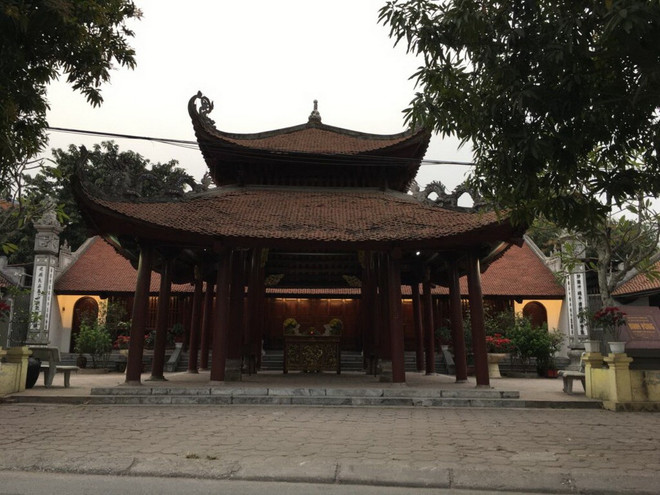
Behind the Vong communal house are mounds, piles, and dense trees creating a picturesque landscape. On both sides of the Phuong communal house are two rows of three-roomed steles, simply decorated. The main communal house has five rooms and two wings, carved with dragons, clouds, flowers, and leaves. The stele house is located on the left side of the main communal house.
During the feudal period, the Communal House was the administrative headquarters of the village, a place for villagers to meet and discuss village affairs, resolve administrative and judicial issues, allocate taxes, divide public land for the hamlets and clans to cultivate annually; a place to handle lawsuits, make village conventions and rules... and also a place to hold annual festivals. During the resistance war, the Vong Communal House was a base for revolutionary activities, and is now the place to send off the children of Ha Dinh villagers to join the army every year.
Currently, Vong communal house still preserves many precious relics from the Later Le Dynasty and the Nguyen Dynasty, 8 royal decrees of the Nguyen Dynasty, the earliest one was in 1847, the latest one was in 1924; palanquins, stone steles, bronze incense burners, bronze bells cast in 1882, stone statues, incense bowls, palanquins, porcelain vases, vases...
Through the vicissitudes of history and time, the communal house has been severely degraded. In 1992, the villagers contributed their efforts to restore the communal house. On January 18, 1993, the people of Ha Dinh were honored to receive the certificate of recognition as an Artistic Architectural Relic from the Ministry of Culture and Information, and at the same time restored the organization of the Vong communal house festival after more than 40 years of interruption.
Unique traditional festivals
The Vong communal house festival has existed for a long time, through many dynasties, and is held annually on February 2 (lunar calendar) to commemorate and express gratitude to the village's tutelary gods, ancestors of families who have contributed to the homeland and country, and to educate descendants on the tradition of "when drinking water, remember its source."
The Vong Communal House Festival is held from the 1st to the 4th of February according to the lunar calendar. Accordingly, on the 1st of February, the communal house opens and the incense bowl is carried from the communal house to the communal house (the communal house is located behind the communal house, about 300 meters away). On the evening of the 1st, there is a ceremony to confer royal robes and change ceremonial clothes on the two tutelary gods and two mandarins. On the 2nd day, the main festival has the following rituals: offering incense, carrying offerings from the communal house to the communal house and from the communal house back to the communal house. In the evening, the tutelary god's tablet is brought inside the forbidden palace and the petitions are burned. The festival ends in the afternoon of the 4th. The farewell ceremony on the afternoon of the 4th is performed, with a palanquin carried by 8 people carrying the incense bowl from the communal house to the communal house.
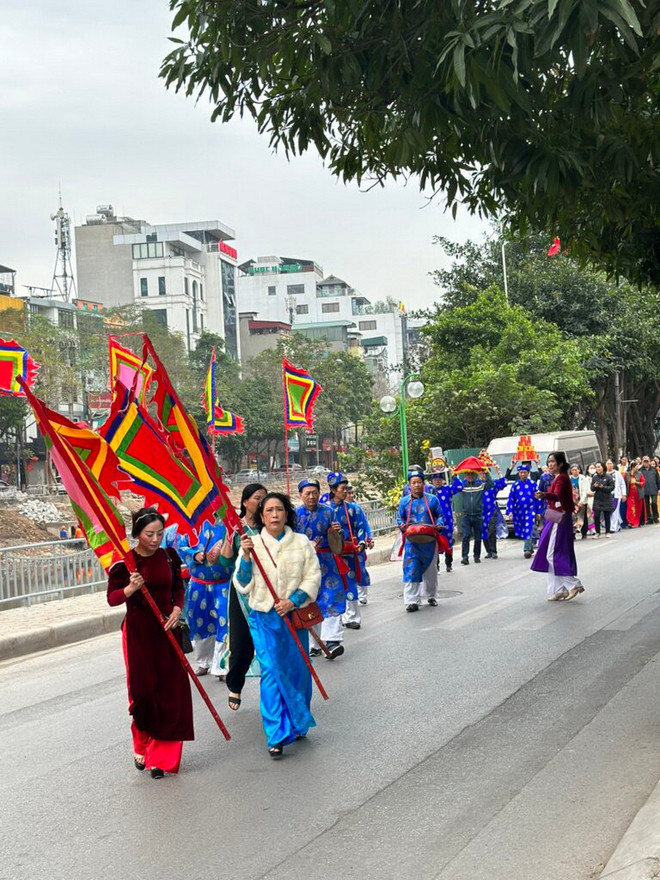
On the morning of the 2nd day of the festival, villagers organize a procession of the village guardian spirit around the village along with a ceremony to honor cultured and studious families. Organize a procession of incense bowls from the communal house to the communal house. On the way of the procession, children are often allowed to crawl under the palanquin to pray for good health and quick growth; adults burn incense, send blessings and pray for luck. In particular, along the way of the procession back to the communal house, each family will bring out a new mat to spread in front of the gate for the whole procession to pass through, then use it for the whole year, considering it a lucky fortune.
The ceremony was performed solemnly and respectfully, preserving and promoting the fine traditional cultural identity of the nation and locality.
The festival has a harmonious combination of traditional and modern cultural, artistic and sports activities such as ca tru singing, quan ho singing and folk games such as shuttlecock kicking, tug of war, wrestling, cockfighting, ring tossing, human chess, bird fighting, etc. creating a joyful and healthy festival atmosphere, contributing to improving spiritual and cultural life.
According to the elders, every three years in the years of Tiger, Monkey, Snake, Pig, Dinh opens a three-day festival on a large scale, attracting local people and visitors from all over the country to participate. This is a cultural activity that shows the beauty of rich spiritual life, with profound educational significance in the community.
Vong Communal House Festival is a place for people to look back to good values of their roots, arousing the desire to build and contribute to their homeland and country.
At the same time, this is a place to connect and increase solidarity among residential areas, attract tourists; and is the premise and foundation for building a unique cultural identity for the locality./.
Source: https://www.vietnamplus.vn/doc-dao-di-tich-quoc-gia-va-le-hoi-truyen-thong-dinh-vong-post1075385.vnp






![[Photo] Deep sea sand deposits, ancient wooden ship An Bang faces the risk of being buried again](https://vphoto.vietnam.vn/thumb/1200x675/vietnam/resource/IMAGE/2025/11/13/1763033175715_ndo_br_thuyen-1-jpg.webp)

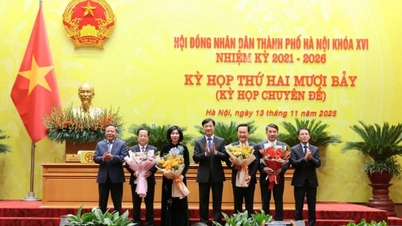










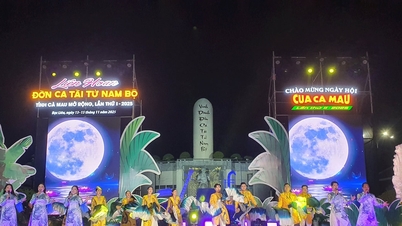














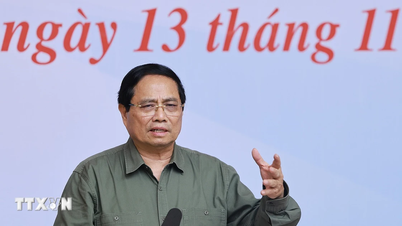





































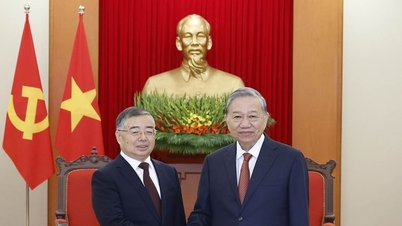
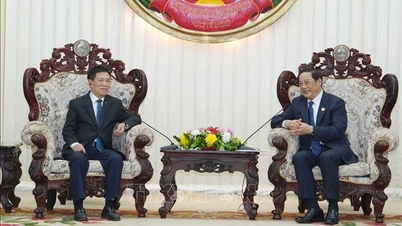








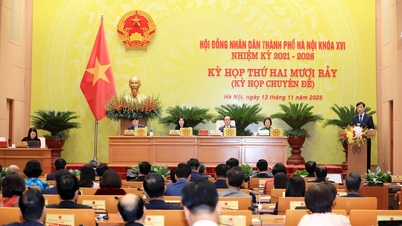



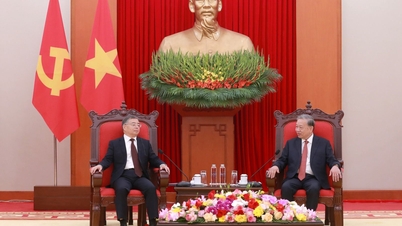
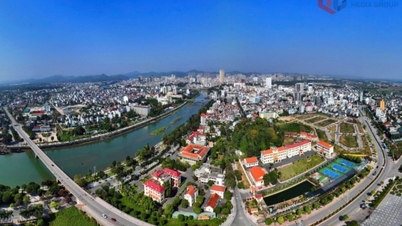



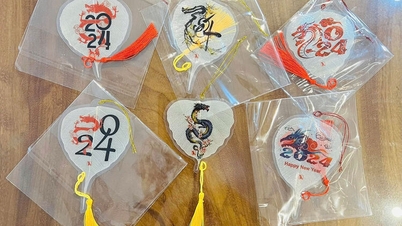

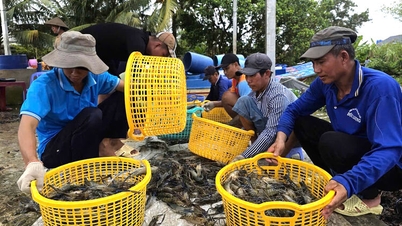

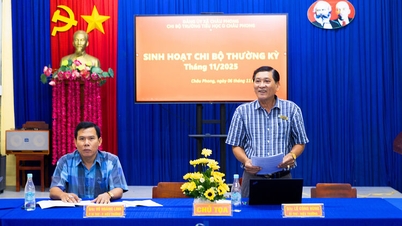





![Dong Nai OCOP transition: [Article 3] Linking tourism with OCOP product consumption](https://vphoto.vietnam.vn/thumb/402x226/vietnam/resource/IMAGE/2025/11/10/1762739199309_1324-2740-7_n-162543_981.jpeg)







Comment (0)